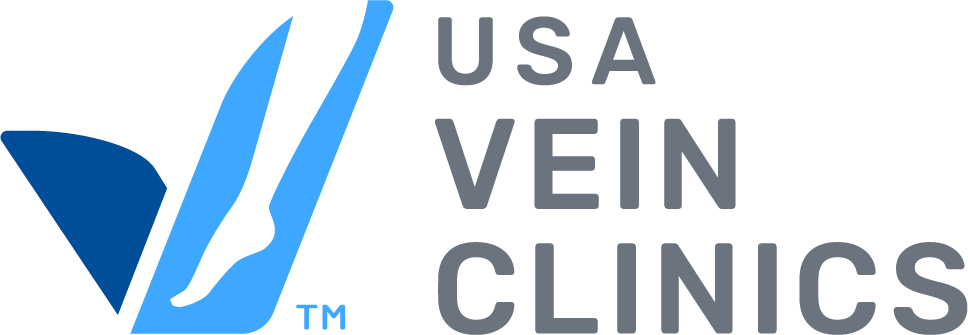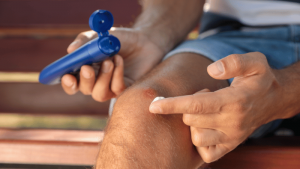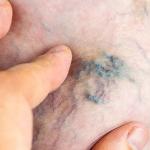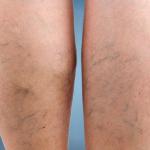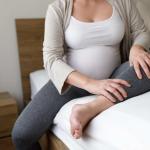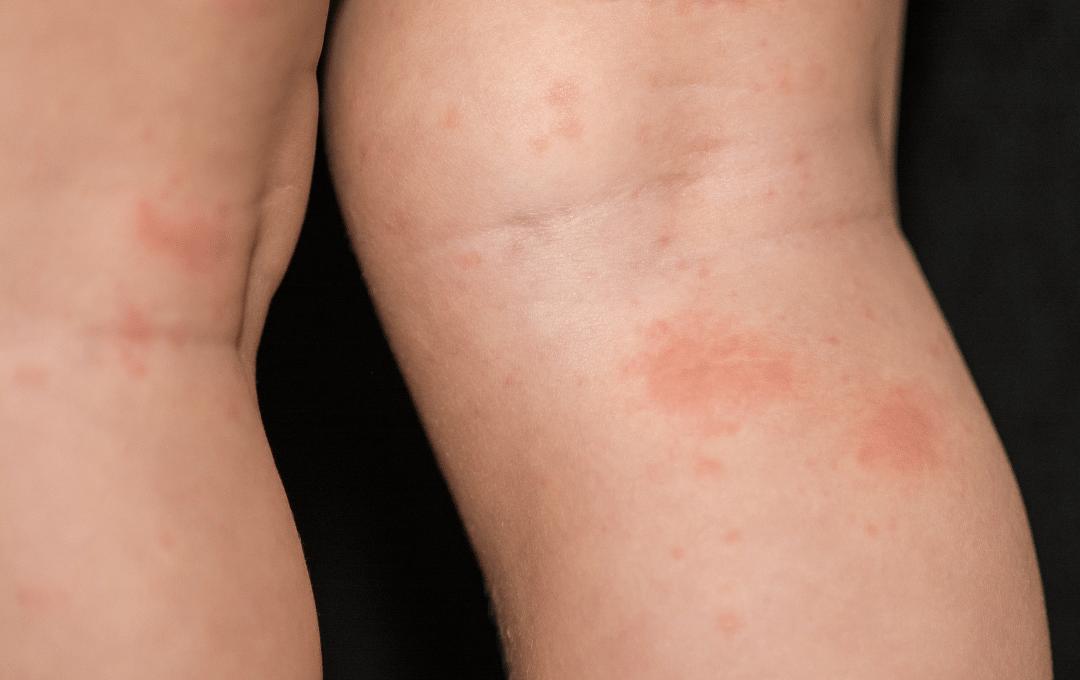
Most people understand what eczema is and how it affects the body. It is a skin condition that can appear anywhere as dry, flaky skin or resemble an allergic reaction. However, what if eczema only shows up in the lower legs with additional symptoms like leg swelling?
This may be a type of eczema known as venous stasis dermatitis or varicose eczema. This condition is mainly caused by poor circulation and can develop into non-healing wounds if left untreated. It’s important to see a doctor if you experience symptoms because if you believe your symptoms are caused by poor circulation, a vein specialist can provide an expert opinion.
Read on to learn more about varicose eczema, the causes of it, and how it can be treated for lasting relief.
Book a Consultation with a Vein Specialist
What Is Varicose Eczema?
Varicose eczema, also known as venous stasis dermatitis, is an inflammatory response caused by poor leg blood circulation. Poor leg circulation can be due to vein disease, resulting in varicose or spider veins. People who are over the age of 50, overweight, pregnant, smoke, or are sedentary are more likely to develop vein disease.
Patients may feel symptoms such as swelling, cramping, fatigue, or leg restlessness in addition to varicose or spider veins. For some patients, walking or elevating the legs can alleviate these symptoms. As vein disease progresses, the chance of developing varicose eczema also increases. Common symptoms of varicose eczema include skin discoloration, changes in skin texture, and swelling in the lower extremities.
What Causes Eczema From Varicose Veins?
Increased pressure in leg veins can lead to varicose eczema. The weakened values make it more difficult for blood to be transported back to the heart, causing it to leak backward and venous insufficiency or vein disease, to develop. When left untreated, this can cause the blood to pool under the skin. Varicose eczema is thought to develop due to the immune system reacting to this fluid. Over time, patients may develop skin discoloration, ankle swelling, and painful, itchy rashes.
How to Tell the Difference Between Eczema vs. Varicose Eczema
Eczema is a skin condition that leads to dry, itchy, and irritated skin throughout the body. Allergies, irritants, immune system dysfunction, and genetics are the main factors that can cause eczema. Varicose eczema is typically only present in the lower legs and ankles and comes with other symptoms of vein disease, such as leg swelling, pain, and heaviness.
Take our online symptom quiz to see if your symptoms resemble vein issues.
Varicose Eczema Symptoms & Early Warning Signs
If you have varicose veins, you’ll want to look for early warning signs of varicose eczema. If you notice any of the following symptoms, consider scheduling a consultation with a vein doctor at USA Vein Clinics for a diagnosis and personalized treatment plan to prevent future complications.
Common Varicose Eczema Symptoms
- Sudden-flare-ups
- Rapid and intense swelling that is noticeable in the lower legs and ankles
- Red rash on the lower legs
- Leg heaviness or aching
- Dry, irritated, or itchy skin
Severe Varicose Eczema Symptoms
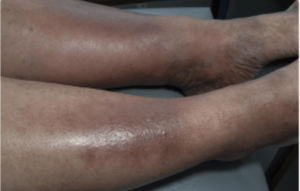
- Change of color or skin discoloration.
- The affected skin on white skin can look red or brown.
- Patches of skin that feel tight and painful
- Persistent swelling and inflammation
- Skin lesions that ooze or crust over
Early Warning Signs of Varicose Eczema
Varicose eczema is a complication of vein disease, so any symptoms of vein disease could be considered its early warning signs. Treating symptoms of vein disease, such as leg swelling or the appearance of varicose or spider veins, can lower your risk of developing varicose eczema.
When Varicose Eczema Becomes Serious
Without treatment, varicose eczema can lead to the development of open wounds called venous ulcers, which can take months to heal (or not at all). A hardening of the skin, called lipodermatosclerosis, can also develop, which is an early warning sign of severe vein disease. Some patients with varicose eczema may also struggle with chronic leg swelling. Early treatment and regular vein screenings can prevent these varicose eczema symptoms from worsening.
SCHEDULE A VEIN SCREENING TODAY
How to Manage Venous Stasis Dermatitis
If you’ve been diagnosed with varicose eczema, there are several short- and long-term treatment options available. These options can help you manage symptoms and prevent your condition from worsening.
Short-Term Relief for Varicose Eczema
Short-term relief and self-care treatments can help reduce the symptoms and improve leg blood flow. However, the following options can only provide temporary relief:
- Moisturizers and barrier creams to prevent skin dryness and reduce irritation
- Topical corticosteroids that can reduce itching and inflammation
- Compression stockings to improve circulation and reduce swelling
- Antibiotics to treat any skin infections
Long-Term Relief For Varicose Eczema
Treating varicose and spider veins can relieve venous stasis dermatitis symptoms. USA Vein Clinics offers minimally invasive treatments for varicose and spider veins that are FDA-approved and effective in alleviating symptoms. Some treatments our vein specialists may recommend include:
- ClariVein®: A rotating fiber device that closes and seals damaged veins.
- VenaSeal™: A medical adhesive is injected into the veins in this treatment.
- Varithena foam treatment: A vein-filling foam treats vein damage in this treatment.
- Radiofrequency Ablation: Heat is used to close damaged veins in this treatment.
- Ultrasound-Guided sclerotherapy: A solution is injected to collapse damaged veins and reroute blood flow.
- Endovenous Laser Vein Treatment: A laser is used to collapse and seal veins during this treatment.
- Sclerotherapy: A sclerosant solution is used to collapse spider veins.
These treatments do not require patients to undergo general anesthesia. There are no incisions, which means fewer risks and side effects than surgery. They also have a quick recovery time so patients can resume most activities shortly after their procedure.
Can You Get Vein Treatment With Flaky, Itchy Skin?
Many patients with venous stasis dermatitis wonder if vein treatments are safe when their skin is irritated, flaky and itchy. Vein treatments are safe and effective for patients with varicose eczema if there are no signs of an infection, open sore, or wound. Infections can complicate the procedure, so treating the infection before receiving vein treatment is recommended.
Varicose Eczema Treatment and Relief at USA Vein Clinics
It’s easy to brush off symptoms, but symptoms can still persist and cause a myriad of issues. If you are experiencing symptoms of varicose eczema, it’s important to discuss them with a doctor or vein specialist so that you can find a long-term solution. The earlier symptoms are detected and diagnosed, the easier the treatment will be.
The specialists at USA Vein Clinics have years of experience treating vein conditions and offer minimally invasive treatments that can be personalized to each patient’s needs. Treatment can reduce symptoms, restore skin health, and prevent serious complications.
Access to expert care is convenient with USA Vein Clinics’ nationwide network of clinics. We accept most insurance plans, including Medicare and Medicaid. You can schedule your appointment online to verify your insurance coverage instantly or call 888.768.3467.
